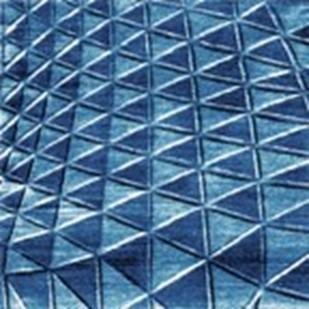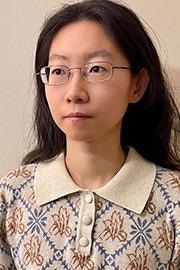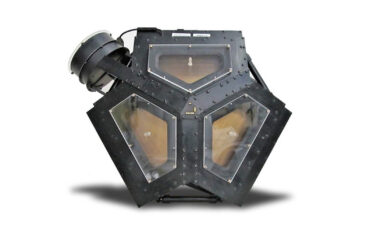
Engineering Novel Semiconducting Ferroelectric 2D Materials
Thought Leaders: Xirui Wang, Jarillo-Herrero Group
We speak with Xirui Wang about her involvement in research that engineered semiconducting ferroelectric properties into a series of transition metal dichalcogenides (TMDs), producing four new 2D materials. We discuss the advantages of utilizing TMDs in this field and the evolving landscape of 2D material research.
Please could you introduce yourself and tell us what initially inspired your career into this field of research?
I am a graduate student in Prof. Pablo Jarillo-Herrero’s lab, MIT physics department.
In recent years, due to the great potential applications in conductivity, catalysis, as well as other high-tech areas, the innovation of 2D materials is growing rapidly with the discoveries of new van der Waals materials and development in fabrication techniques.
Our group has a pioneering impact in twisted bilayer graphene research, where emergent properties can appear when you stack two pieces of graphene with a specific twist angle. Beyond graphene, there are many other 2D materials with fascinating properties. It is natural to ask what will happen if introducing a twist angle to these other materials, and this led to our discovery of ferroelectricity in twisted boron nitride and transition metal dichalcogenide bilayer systems.
How did you first become involved with ferroelectric systems in particular?
As I mentioned, we have been looking into twisted bilayer systems beyond graphene, and we decided to start from boron nitride (BN), one of the most widely used 2D materials. However, much fewer investigations have been tried than graphene because of the insulating nature of BN.
Interestingly, there were theoretical predictions that the system could become ferroelectric by stacking two non-ferroelectric monolayers of BN in parallel. It would be exciting to realize this experimentally, and this was the start of our journey.
Xirui Wang, MIT Physics Graduate student
After we demonstrated robust ferroelectricity in parallel-stacked bilayer BN, we tried to extend our working principle of stacking-engineered ferroelectricity to other material platforms and successfully realized it in transition metal dichalcogenides, thus significantly expanding the 2D ferroelectrics family.
In your own words, could you summarize the results of your research?
We engineered a group of 2D ferroelectric semiconductors by stacking two non-ferroelectric monolayers. By applying an electric field, we can switch the electrical polarization in the material, which is realized by the interfacial sliding motion of the two layers.
The sliding mechanism is unique for this type of 2D van der Waals ferroelectrics, differing from conventional ferroelectric materials. We also visualized the domain wall motion by piezoelectric microscopy. The four materials we demonstrated in our paper using this engineering guiding principle are called transition metal dichalcogenides (TMDs).
Could you briefly define ferroelectricity?
Ferroelectricity defines a material that has switchable spontaneous polarization. It means that in a material, the positive and negative charges spontaneously move to opposite sides in the material and form an electric dipole. By applying an electric field, the dipole can be switched.
Ferroelectric materials have broad applications in non-volatile memories, another choice beyond magnetic memories, for example.

Identifying this new family of ferroelectric semiconductors draws from previous research involving boron nitride. What are the main benefits of utilizing TMDs for this application?
Different from BN, which is an insulator that can only be used as gate dielectrics, the TMDs are semiconductors that have unique electrical and optical properties. Ferroelectric semiconductors have great potential in non-volatile memories, and also, there is a large exploration space to combine the optical properties with ferroelectricity in TMDs.
Properties of the R-stacked bilayer TMDs were found to be stable at room temperature, indicating their suitability for non-volatile memory devices. Are there any other applications that this characteristic makes them particularly suited for?
R-stacked TMDs have the potential to help overcome the so-called “Boltzmann Tyranny” in field-effect transistors (FET). Due to Boltzmann distribution of electrons, there is a limit in voltage needed to operate a FET.
Ferroelectric materials offer an option to lower the limit, which can greatly reduce power loss. The ultrathin nature of R-stacked TMDs makes them an appealing platform to integrate into FETs. The stable room temperature ferroelectricity in TMDs also indicates their potential application in the optical control of ferroelectricity.
Did you face any challenges in your research, and if so, how were they overcome?
Different from graphene where you get large pieces easily, TMDs are harder to exfoliate and work with in general. Therefore, the yield of our devices is not so high. We thought of ways to improve our device design and paid a lot of effort to make it work.

What are the next steps for your research? Are there any particular innovations you are striving towards?
There are many extensions of the research that we are interested in; for example, how about applying the same strategy to other types of 2D materials? What will happen if ferroelectricity interplays with other physical properties, like magnetism? And more importantly, what intrinsic physics lies behind the experimental observations for these 2D materials?
Twistronics is an impactful field of research in exploring the electrical properties of 2D materials. How do you envision this field developing over the next 20 years?
I’m still a learner in this field, but seeing all these thriving discoveries in just the recent four years, I believe there are many possibilities.
Xirui Wang, MIT Physics Graduate student
The expansion of 2D families and the development of fabrication techniques will enable us to study broader twisted systems. The combination with different types of probes will deepen our understanding of the emergent physics in twistronics.
From an application point of view, the engineering of different phases in materials with a twist, such as superconductivity, magnetism and ferroelectricity may lead to real applications in multifunctional devices.
The most fulfilled aspect I find is how the theoretical knowledge and experiment work shapes each other closely during our work, from improving device quality, optimizing measurement schemes, to a better understanding of interfacial ferroelectricity. It is fascinating to see that a theoretical idea works out experimentally, and the experiment, in turn, deepens our theoretical understanding.
- Read the original research: Interfacial ferroelectricity in rhombohedral-stacked bilayer transition metal dichalcogenides
- Learn more about ferroelectricity in bilayer boron nitride
- More from the Jarillo-Herrero Group
About Xirui Wang

Xirui is a fourth-year graduate student in Professor Pablo Jarillo-Herrero’s lab at MIT. Her work focuses on the electronic transport properties of 2D materials, focusing on ferroelectricity in twisted boron nitride and transition metal dichalcogenides.
In her undergraduate studies, Xirui explored several different fields of experimental condensed matter physics, including single crystal growth, scanning tunnelling microscopy and ultrafast optics. Xirui prides herself on pursuing interesting physics in a variety of material systems and hopes to realize their practical applications.


